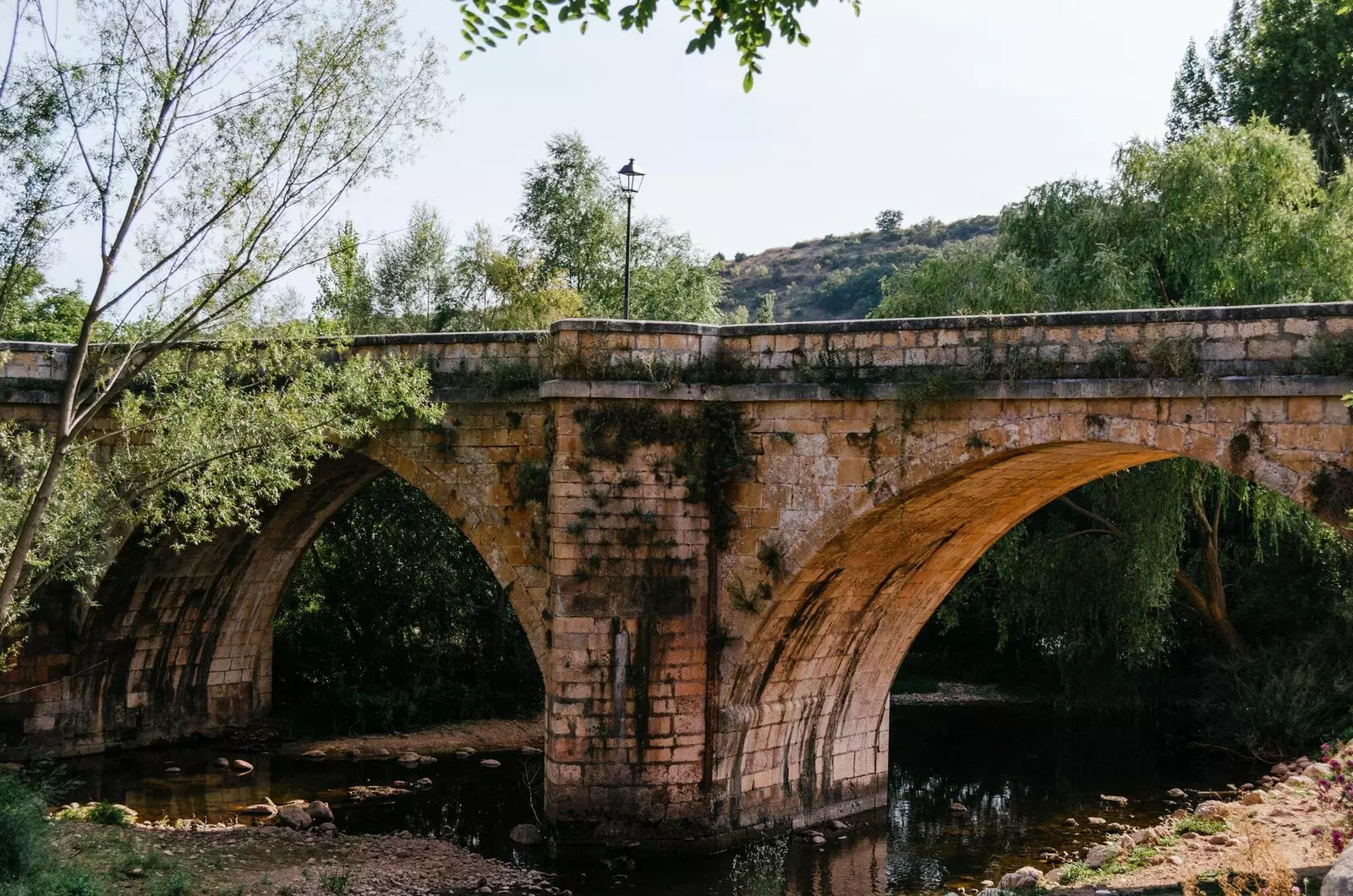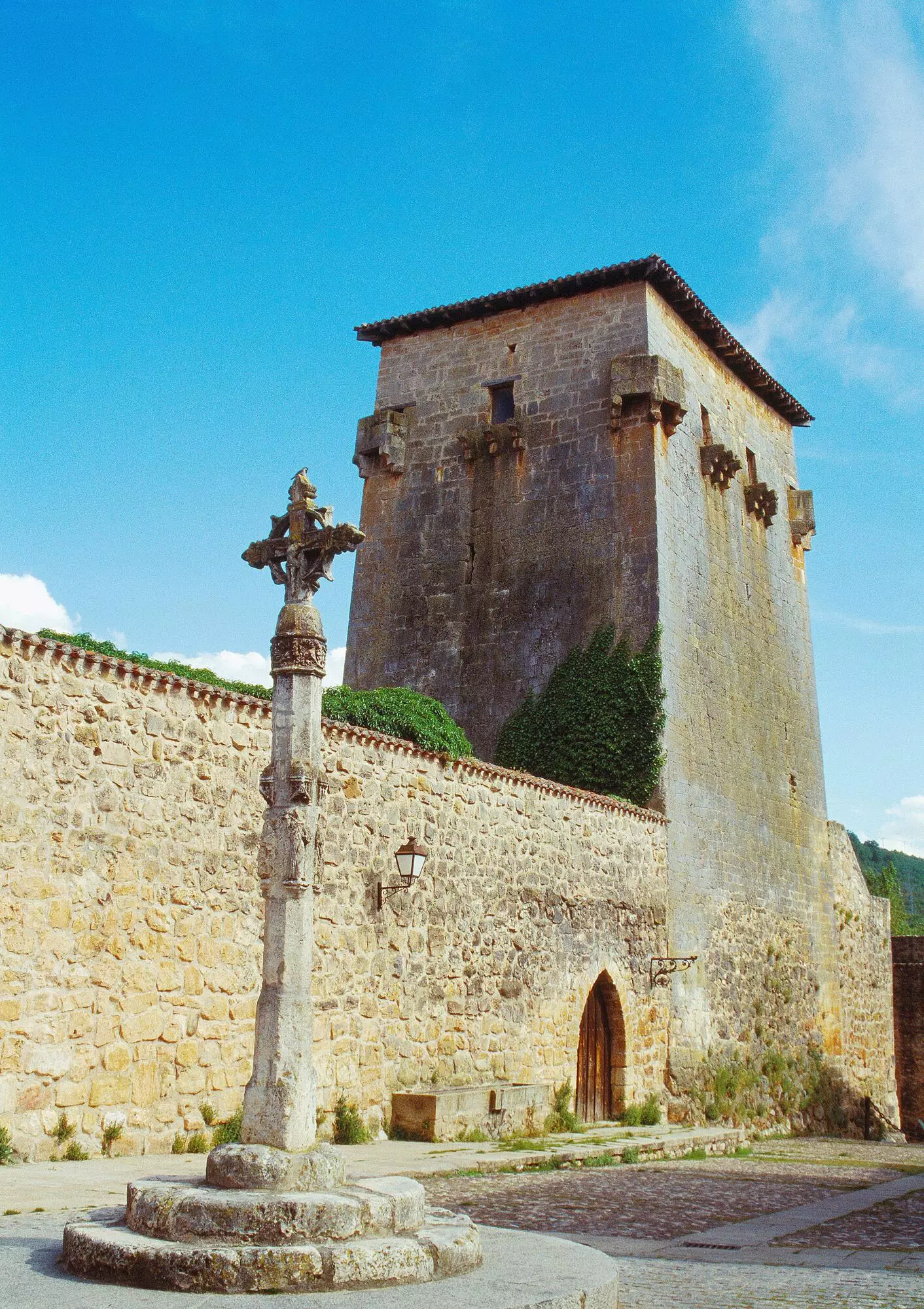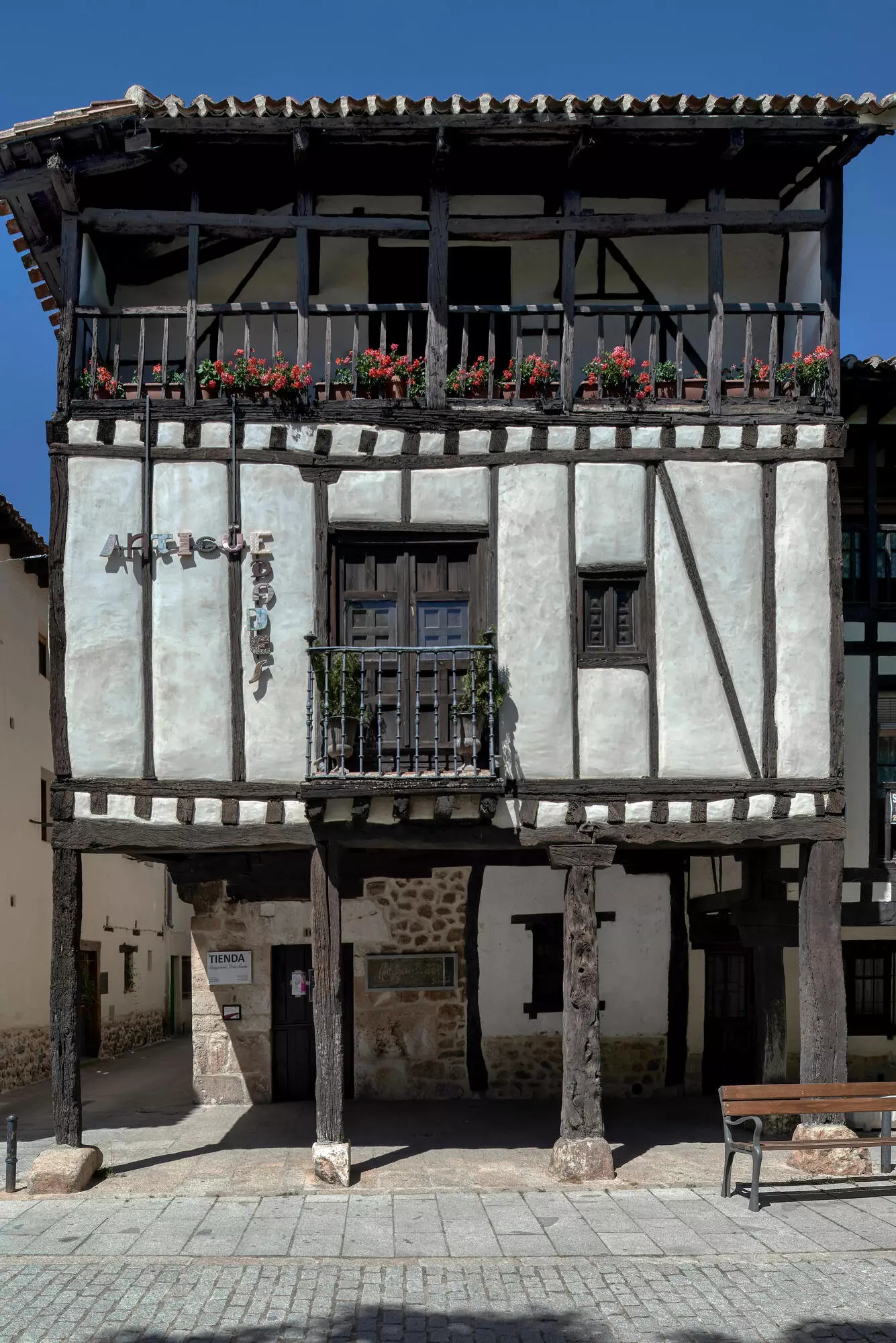In the heart of the province of Burgos hides one of the most beautiful villages in Spain. Covarrubias It is one of those few places that have the strange power of making us travel through time simply by walking through its streets.
Some streets with towers, remains of old walls and stately homes that show the unequivocal signs of the architecture traditional castilian.
And it is that Covarrubias has been designated by historians as the cradle of Castile . It was here that the Castilian count -and famous warrior-, Fernán González, created a fortified square that would end up as capital of the Infantazgo de Covarrubias and leading an important monastic lordship that would be the embryo of the kingdom of Castile.
Today, the echoes of battles, tragedies and disputes have been lost in the Burgos breeze and the waters of the Arlanza River parade with a calm and ceremonious air under the arches of the Saint Paul's medieval bridge , built on the outskirts of Covarrubias.

Medieval bridge of San Pablo.
THE TOWER OF COVARRUBIAS AND THE HEARTBREAKTHROUGH
Those waters of the Arlanza might collect the tears of two princesses who were betrayed by stories of forced love.
The first one was Lady Magpie , daughter of the powerful Fernán González. Her father had planned for her a profitable marriage with a prince from León, but the girl had fallen into the unpredictable webs of youthful love while trying to with a humble village shepherd.
Fernán González did not hesitate in the least when he ordered his soldiers to lock his daughter in the spectacular medieval keep that still rises in the center of Covarrubias.
The measure gave him results, because Doña Urraca ended up marrying with three mighty men , chosen by her father, throughout his life.
The Tower of Fernán González is an authentic jewel of military architecture in Spain , as it is the only Castilian fortification of this nature prior to the 10th century.
Today, we can visit the interior of this thousand-year-old tower, built with thick and imposing walls and where we will find a magnificent medieval siege weapons collection.

Fernán González ordered his daughter to be locked up in this medieval tower.
ECCLESIASTICAL HERITAGE AND MEDIEVAL HOUSES
Walking through the cobbled and tangled streets of Covarrubias we will not be able to take our eyes off those old Castilian mansions with noble wood lintels, reddish roofs and arcades in which to shelter from the rain and the sun.
Pots with colorful flowers adorn balconies and window sills during the spring, when the town shines with greater splendour.
one of those houses is that of Bishop Pedro Peña , who was an archbishop in Latin America in the 16th century. On its façade you can still admire the family coat of arms.
Also Dona Sancha's house (15th century) is worth seeing. It is the typical example of a medieval Castilian house, with its adobe façade, wooden framework, wide arcade and balcony.

The charming house of Doña Sancha.
As for the ecclesiastical heritage of the town, the church of Santo Tomas – from the 12th century, but totally reformed in the 15th – it has three different entrances and an interior in which its six altarpieces stand out, a beautiful organ from the 18th century, an ancient Romanesque baptismal font and an impressive Plateresque staircase.
The former collegiate church of San Cosme and San Damián rivals the church of Santo Tomás to take the scepter of the most important ecclesiastical monument in Covarrubias.
It was built at the end of the 15th century and in Gothic style, on the remains of a Romanesque church . Beyond its monumental beauty and its rich museum, this place stands out for serve as a last resting place to the bodies of personalities as illustrious as Count Fernán González and his wife Sancha, as well as three infantas abbesses and, above all, the Infanta Cristina of Norway.

The spectacular former collegiate church of San Cosme and San Damián.
A NORWEGIAN PRINCESS WHO DIED OF SADNESS IN SPAIN
The story of this Norwegian princess is the saddest of those that the medieval chronicles of Covarrubias can tell us.
Kristina, daughter of King Haakon IV of Norway she, she became an infant of Castile thanks to an ambitious plan drawn up by King Alfonso X, the Wise. Actually, it seems that the Castilian monarch was going to marry the Norwegian princess, although he was already married to Violante de Aragón.
Since his wife was unable to give him offspring, she thought of this powerful alliance with the Norman king. However, when Kristina had already made her way to Spain , Violante became pregnant and Alfonso decided that the beautiful Norwegian would marry her brother, the infant Felipe de Castilla. That was finally her luck and soon she went to live in Seville where the infant resided.
The princess never got over the deep sadness that she contracted when she separated from her beloved Nordic land and from her relatives, dying of pure melancholy just four years after arriving in our country.
Today, a statue of her pays homage to her in the Plaza del Rey Chindasvinto , between the collegiate church and the Tower of Fernán González.

The statue of Kristina stands on King Chindasvinto square.
THE HERMITAGE OF SAN OLAV
But we also find the sad mark of Princess Kristina on the outskirts of Covarrubias, specifically between the green forests of the Valley of the Wolves , about 2 kilometers from the center of the medieval town. Here stands a church as strange as it is symbolic: the hermitage of Saint Olav.
The story goes that, as soon as she arrived in Spain, Princess Kristina asked the Infante Felipe to build a church to honor the Christian patron saint of her country, Saint Olav . The positive promise of the infant fell into oblivion until a project sponsored by the Kristina Foundation of Norway, the Covarrubias City Council and the architecture schools of Valladolid and Oslo managed to make it a reality in 2002, more than 700 years later than promised.
The result is an original, modern and strange hermitage which has a bell tower and a chapel whose interior is made of wood and has an austere design. The place serves as small exhibition and conference room , and also has a curious museum that tells the story of Saint Olav and that of Princess Kristina.

The strange and symbolic hermitage of San Olav.
A TYPICAL CASTILIAN GASTRONOMY
A good way to forget the sorrows that the previous story can cause us is to dedicate ourselves fully to the exploration of The tasty gastronomy by Covarrubias.
For this we can direct our steps to the Plaza de Doña Urraca, where the magnificent culinary proposals await us of tiky restaurant.
Between them highlights its "Olla Podrida" , a dish composed of red beans, black pudding, chorizo, marinated rib and bacon. You will not find a more typical Covarrubias food than this.
To digest the overwhelming food, nothing better than walking next to the remains of the medieval wall of Covarrubias . Most of the defensive fortification was demolished during a fatal epidemic at the end of the 16th century. Felipe II's doctor, Francisco Valles, ordered its destruction so that the air could circulate better.
If we listen carefully in the silence of the evening, the stones of those walls still tell us the dense and bittersweet history of Covarrubias.
